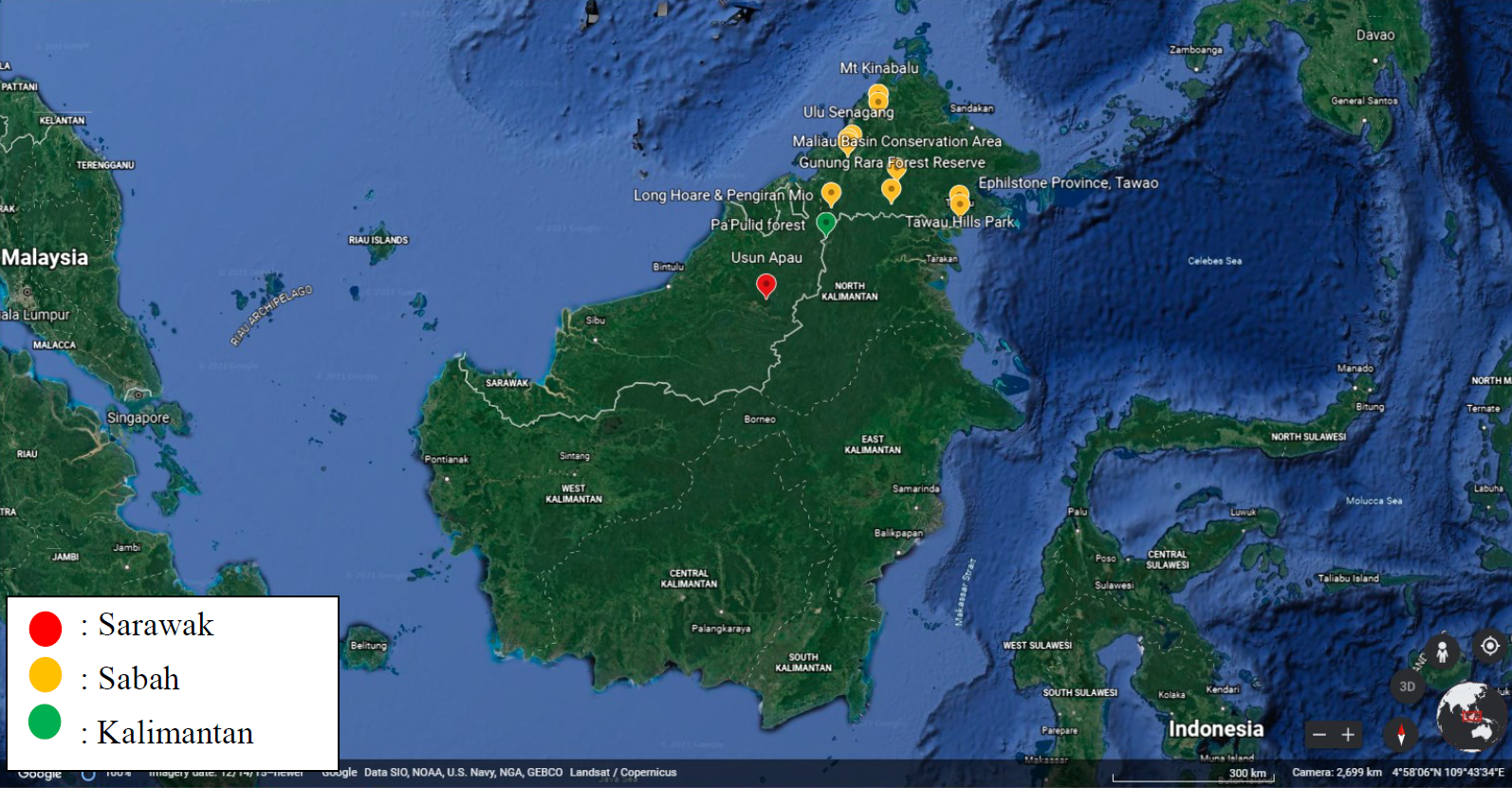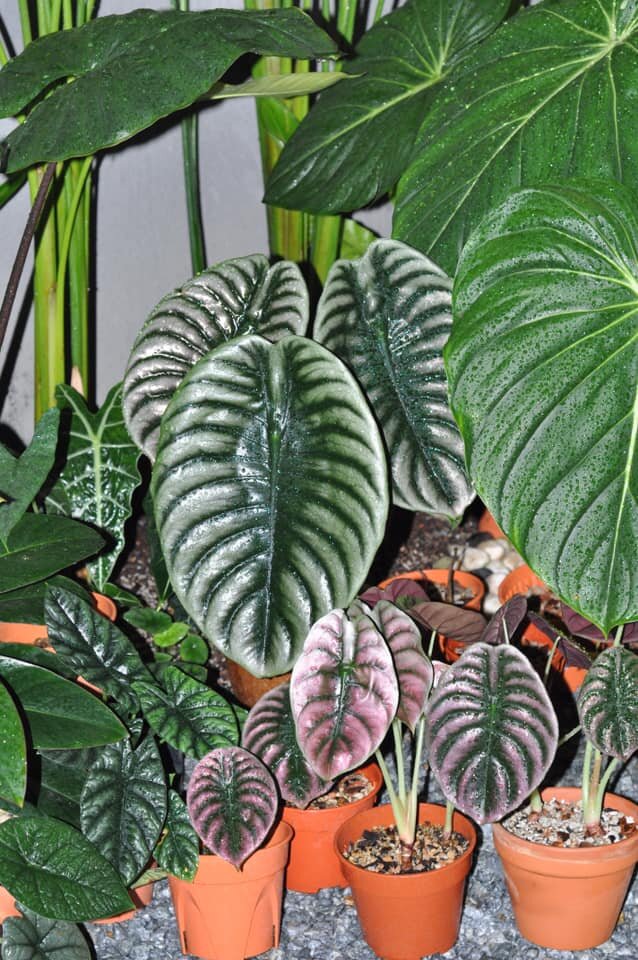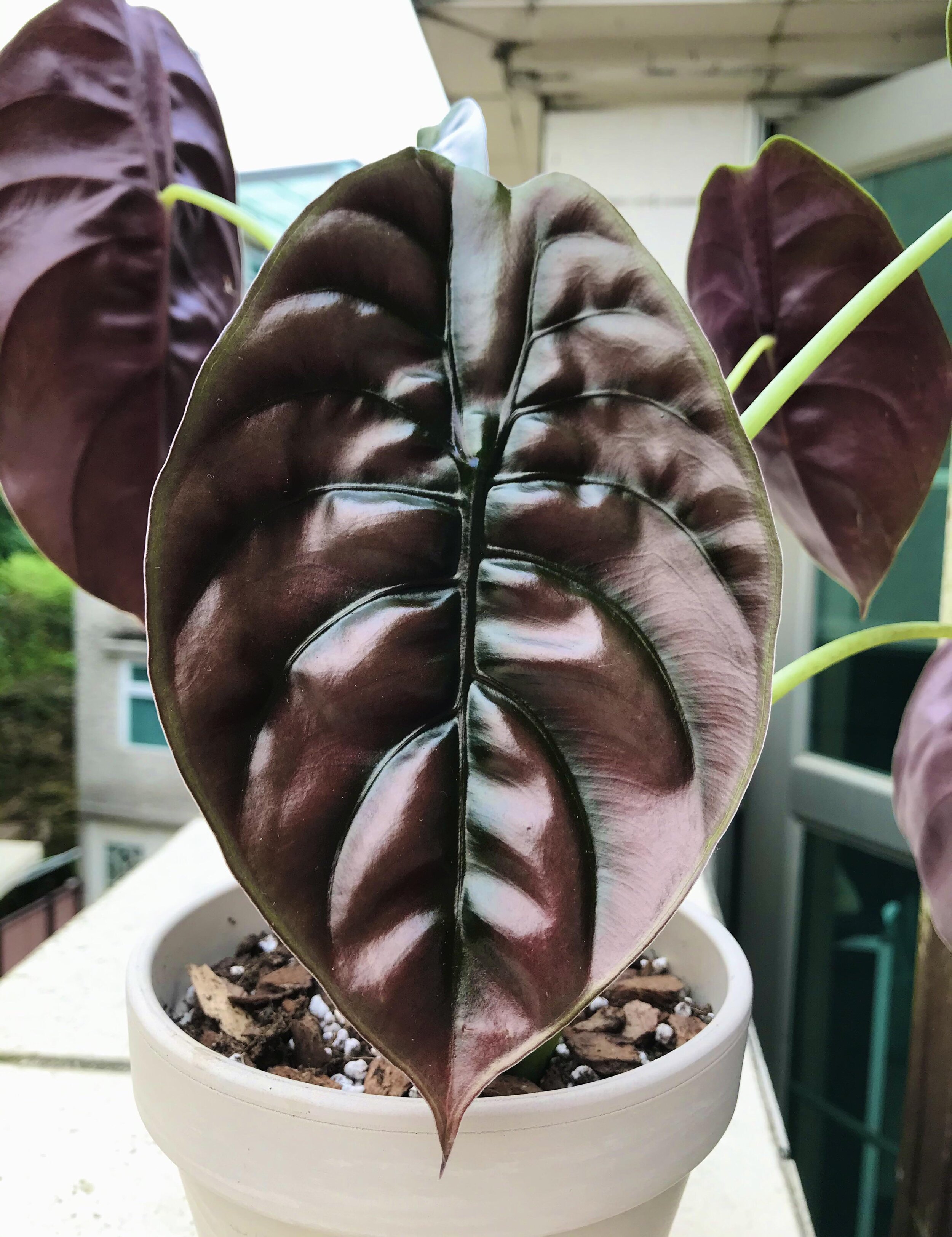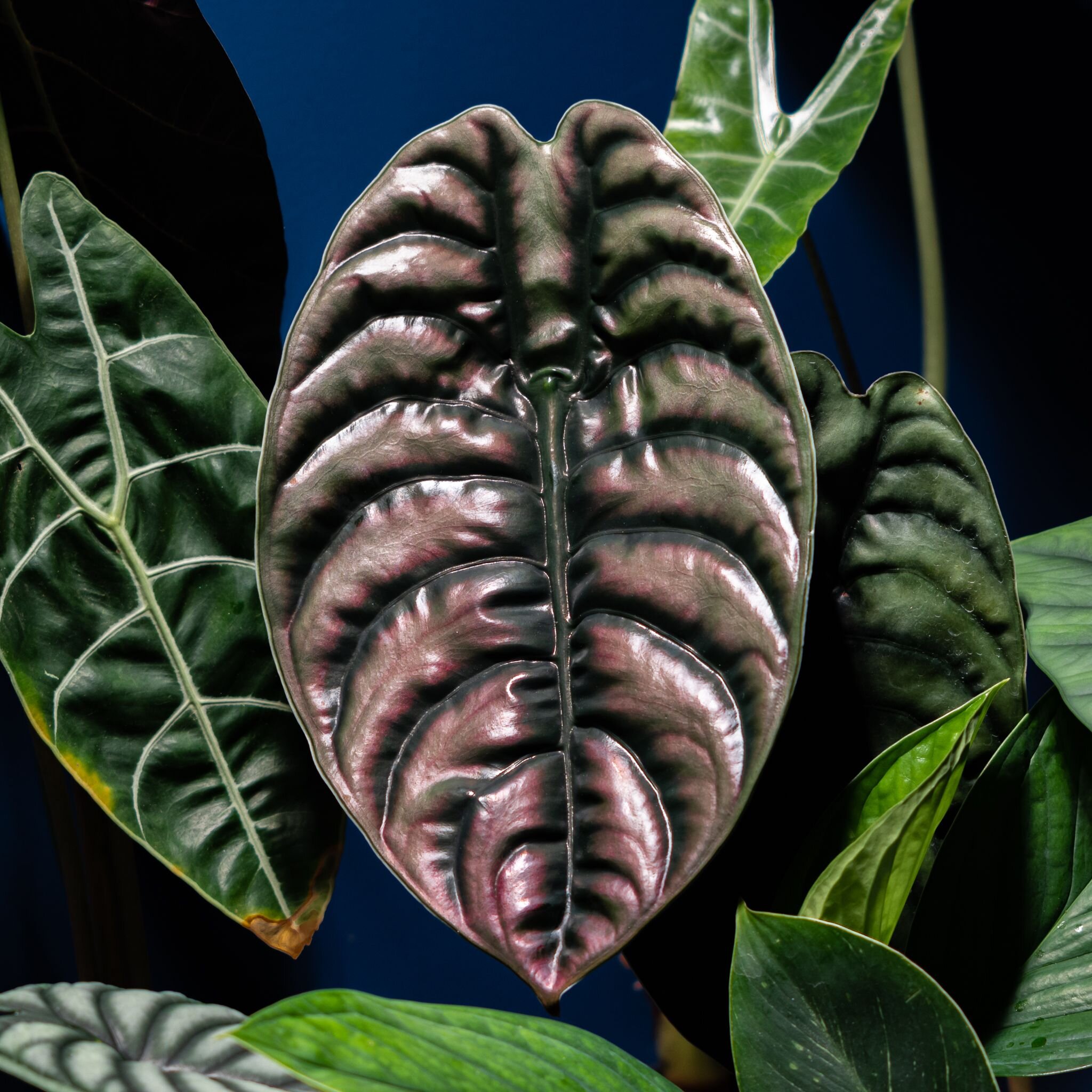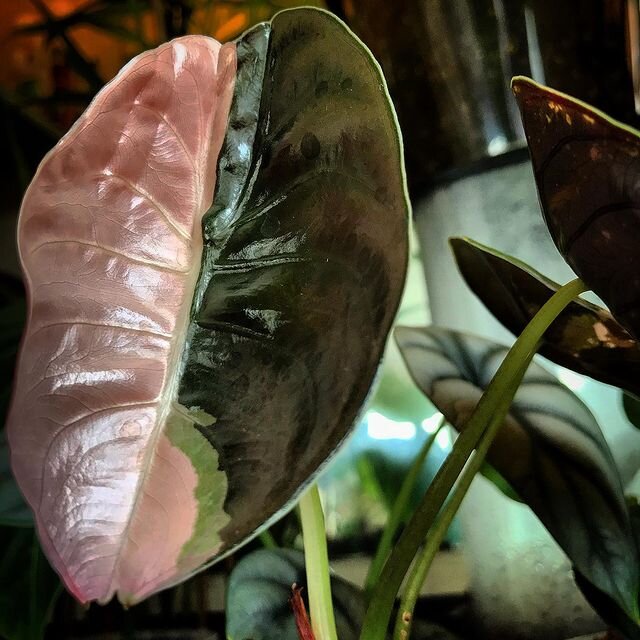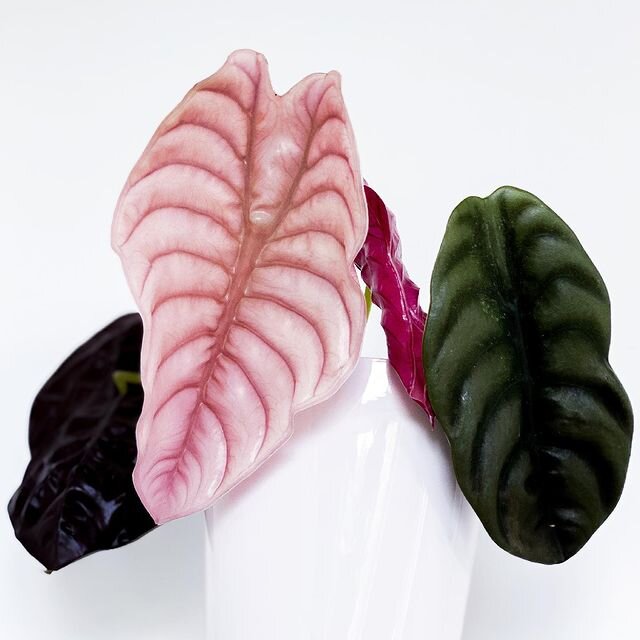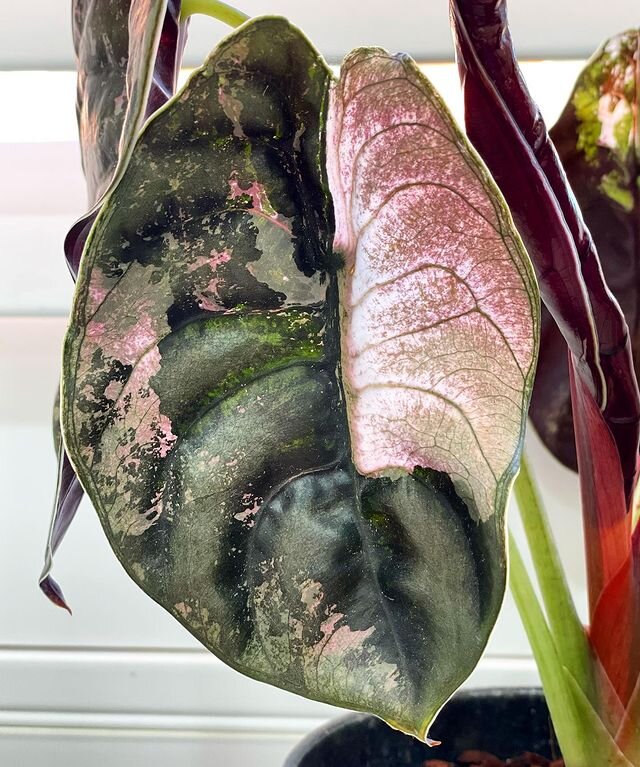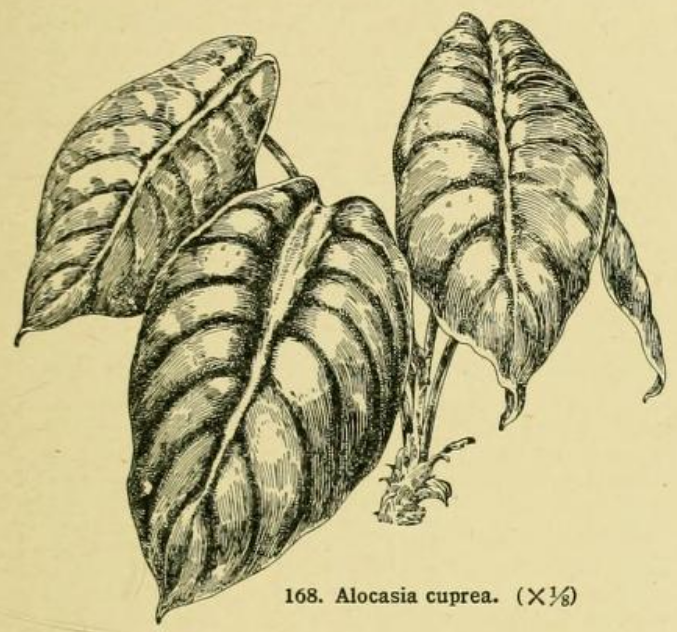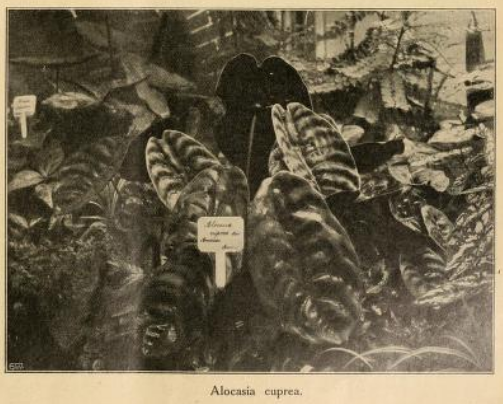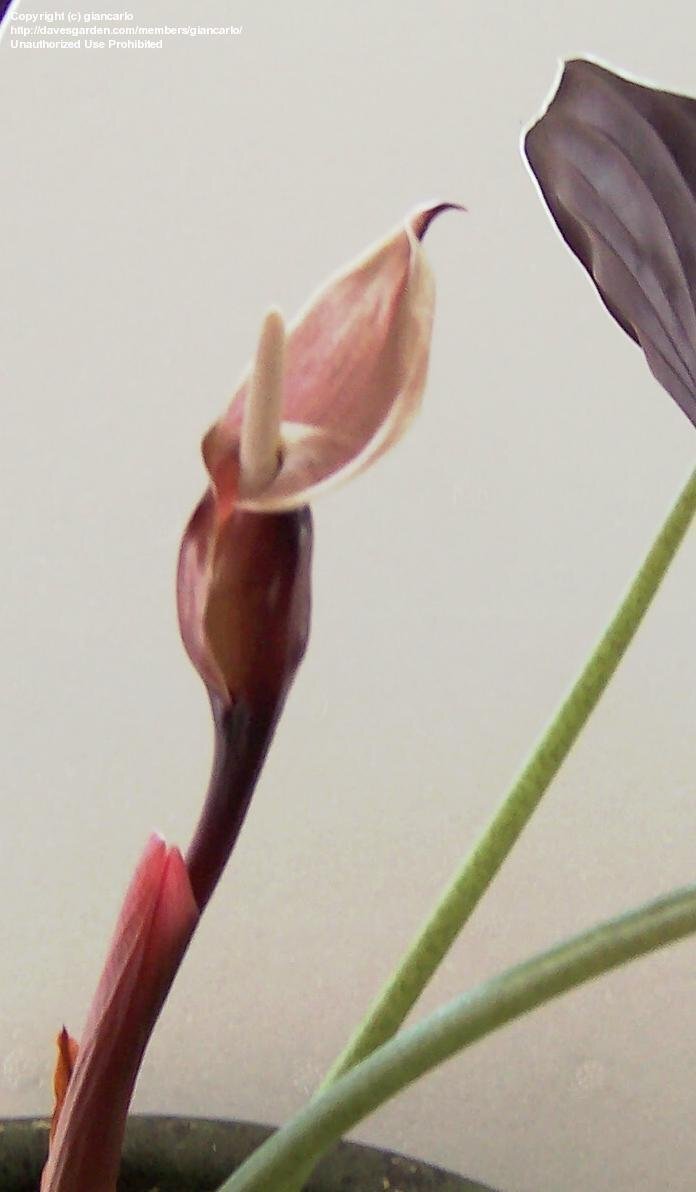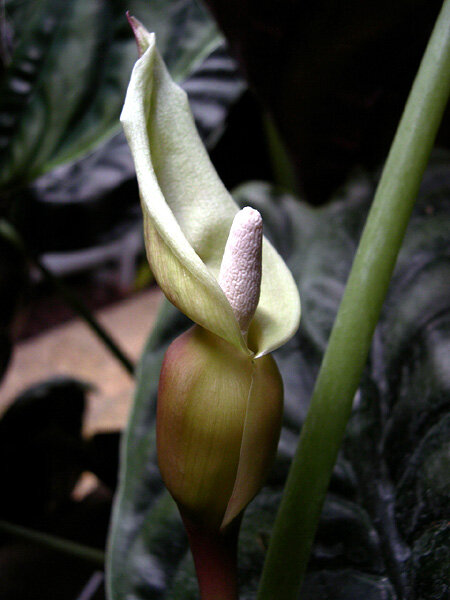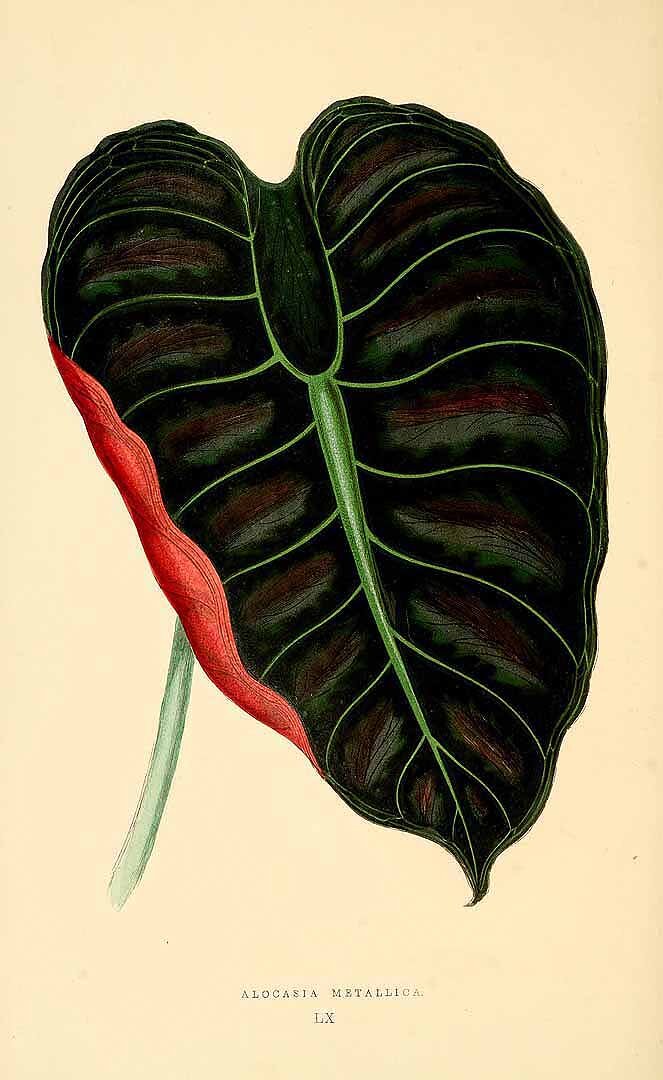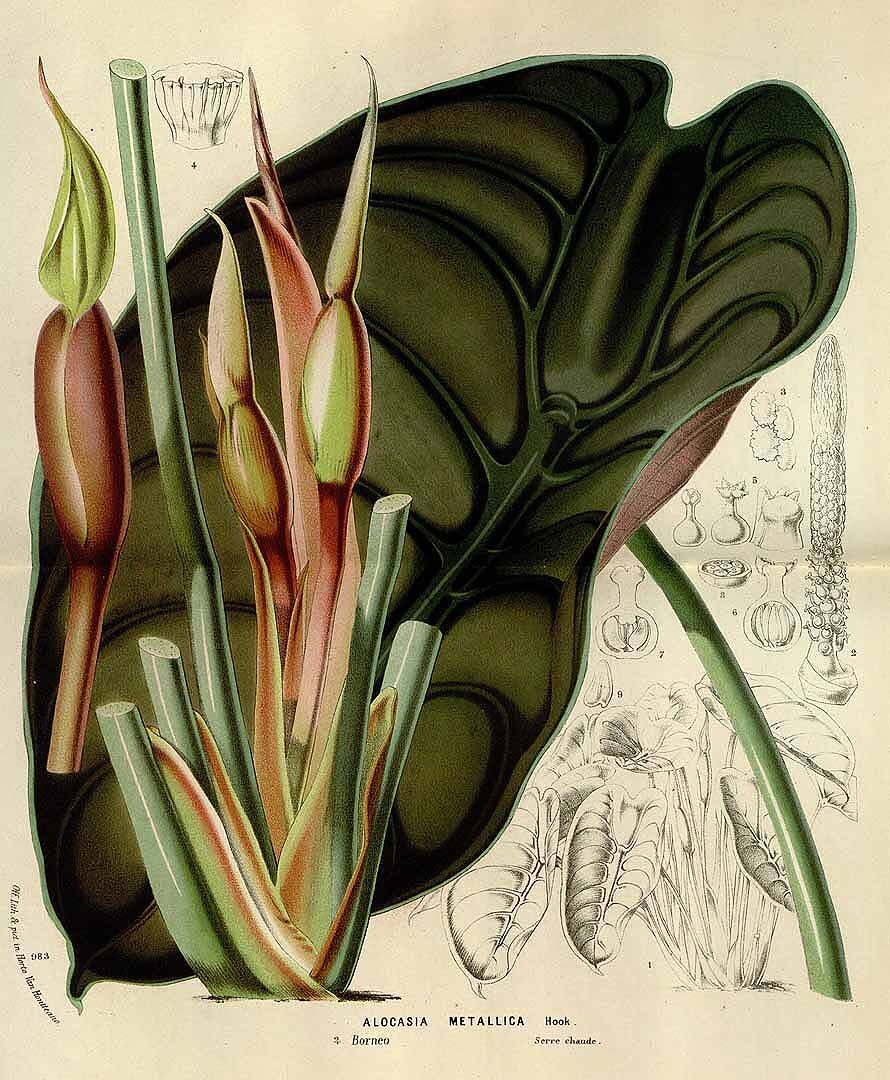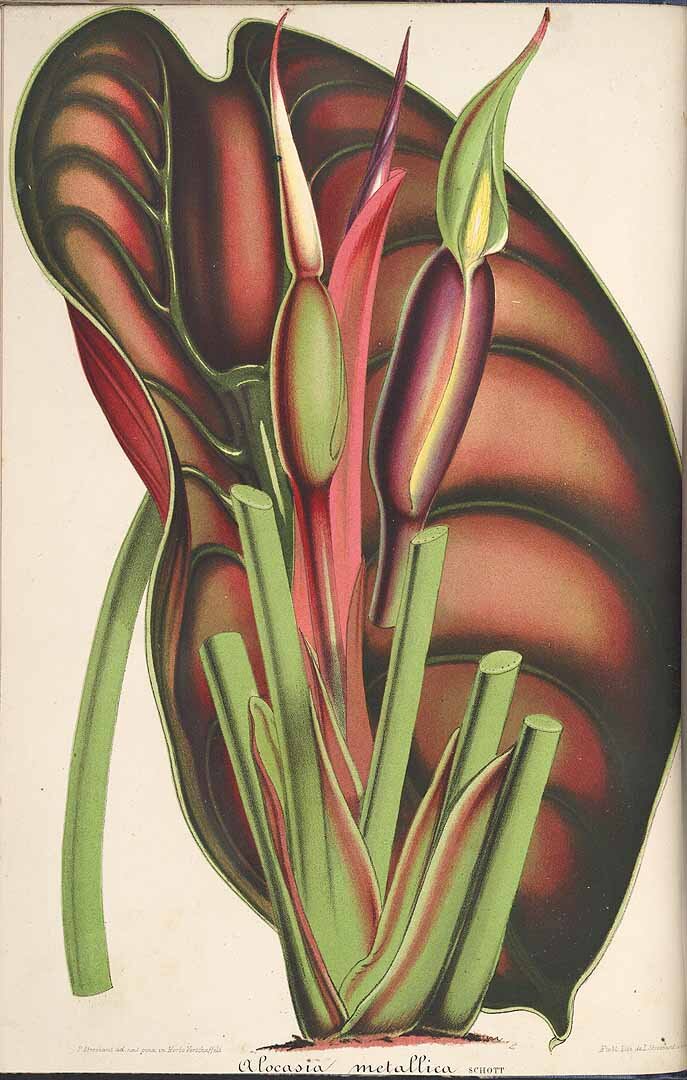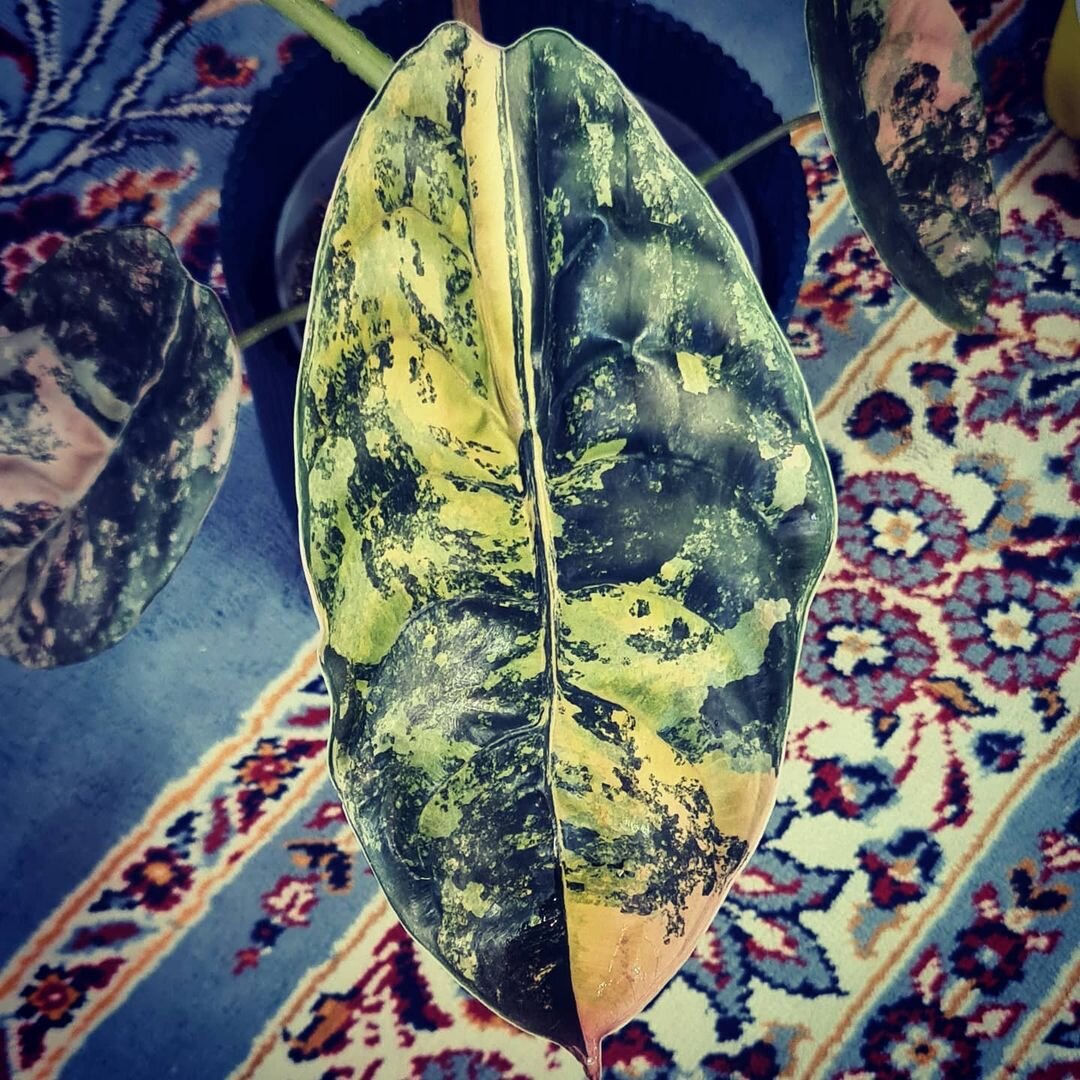ALOCASIA CUPREA
ORIGINAL DESCRIPTION:
First introduced as Caladium cupreum in 1854 by K.H.E. Koch in Index seminum in horto botanico Berolinensi
It was then first introduced in English as Gonatanthus cupreus in September 22, 1859 by Low & Co. from Clapton Nursery (UK)
Proceedings of the Royal Horticultural Society London v.1 (1859) P.77
It first started appearing in English literature as Alocasia metallica in 1860
In France it was still known under Alocasia metallica until at least 1861 when the first detailed inflorescence illustration was published in L’Illustration Horticole
German botanist Karl Koch then subsumed all other synonyms under Alocasia cuprea in 1861 (see notes for more details)
“Peltate leaves, brown-copper colored; Erect spathe, red-green colored on upper side, which shifts to a purple lower chamber; Corrugated spadix, with upper third visible; 3 and 4-lobed stigma”.
Alocasia cuprea (H.Low ex Sankey) K.Koch, Berliner Klin. Wochenschr. 4: 141 (1861)
Alocasia cuprea adult specimen, photographed in 2019 at the Amazon Spheres in Seattle, WA
SYNONYMS:
HOMOTYPIC SYNONYMS: Caladium cupreum, Gonatanthus cupreus
HETEROTYPIC SYNONYMS: Alocasia metallica, Caladium metallicum, Caladium veitchii
ACCEPTED INFRASPECIFICS: N/A
DISTRIBUTION: Indonesia | Borneo | Sabah and Sarawak
A. cuprea has been observed in these regions of Borneo, but it has been in circulation for a long time, and it is possible it has since been naturalized rather than being native
Updated distribution of Alocasia cuprea in Sabah, Sarawak and Krayan (North Kalimantan) - Update on Alocasia Cuprea - Distribution in North Kalimantan, Ni Putu Sri Asih et al (2022)
CLIMATE: Equatorial lowland humid forest
Humidity is consistently high in the lowlands ranging from 80% to 90%
Temperature is relatively uniform throughout the year - within the range of 73°F/23°C early in the morning to 90°F/32°C during the day. Minimum temperatures in the lowland areas don’t generally dip below 68°F/20°C
The average rainfall per year is between 3,300 millimetres and 4,600 millimetres, depending on locality.
ECOLOGY: A. cuprea has been observed to grow on slopes in the rain forest, around sandstone, limestone and in ultramafic areas (rich and well-draining), ca. 1000-1500 m altitude.
Growers will often note that Alocasia cuprea doesn't have a large root system, despite sporting numeours large leaves. This is because in its native Sarawak home, the topography is marked by karst mountain chains. Alocasia cuprea roots among the rocky forest floor, typically on slopes, where it has little use for deep, penetrative roots. It instead relies on absorbing epikarst water, which it stores by having huge, thick, leathery leaves.
SPECIES DESCRIPTION:
Alocasia cuprea is one of the most well known diminutive Alocasia species and is the only Bornean species continuously in cultivation since its introduction around 1860.
Juvenile leaves are peltate, with partially to completely connate posterior lobes, which may or may not persist into various stages of subadulthood. Both abaxial and adaxial surfaces exhibit reddish coloration (deeper on abaxial)
Adult leaves are large, ribbed, and glossy, resembling copper-tinted grey breastplates. The reddish coloration is maintained only on the abaxial sides. Juvenile plants show red in both the abaxial and adaxial surfaces, but mature to a copper green adaxial and only keep the red on the abaxial surfaces.
Herb to ca. 80 cm tall; rhizome decumbent, to ca. 6 cm diam.; leaves several together, each (?always) subtended by two marcescent reddish brown cataphylls, the first ca. V4 and the second ca. V2 the length of the petiole; petiole to ca. 70 cm long, green, faintly mottled brown or greenish brown throughout, sheathing in the lower Vsth; blades coriaceous, hanging, ovate, bullate between the main veins, to ca. 60 cm long x 40 cm wide, adaxially glossy bronze-green, darker near the primary veins, abaxially deep purple, with a hyaline colourless margin ca. 1.5 mm wide; anterior lobe with the tip obtuse and abruptly and shortly acuminate; anterior costa with 8-11 primary lateral veins on each side, proximal ones diverging at ca. 100° then arching forward and outward to join a submarginal vein - more distal primary veins diverging at ca 60°; all primary veins with very conspicuous axillary glands abaxially; secondary veins forming well-defined undulating interprimary collective veins; posterior lobes completely united except for a shallow retuse notch, rounded; posterior costae diverging at ca. 20°
INFLORESCENCE:
Inflorescences paired, not forming multiple series, subtended by cataphylls similar to those subtending the leaves; peduncle similar to the petiole, to ca. 22 cm long; spathe green to greenish purple, ca. 10 cm long; lower spathe oblong ovoid, ca. 4.5 cm long ca. 2 cm diam; limb about equaling the lower spathe, at first erect and cucullate, then sharply deflexed, separated from the lower spathe by an abrupt constriction; spadix considerably shorter than the spathe - ca. 6 cm long, very shortly stipitate, cyhndric except appendix; female zone narrowly cylindric, ca. 2 cm long x 8 mm wide; ovaries subglobose, longitudinally 3-4-ribbed; stigma raised on a very short slender style, conspicuously 2-4-lobed; sterile interstice not attenuate, isodiametric with male and female zones, ca. 2 whorls of rhomboid synandrodia; male zone cylindric, 2/3rds or all within the lower spathe, 2 cm long; synandria rhomboid, 4-6-merous, with the synconnective raised above but not overcapping the thecae; thecae opening by apical pores; appendix white, spindle-shaped, blunt, faintly irregularly channelled, ca. 2 cm long, constricted at union with male zone; fruit unknown.
VARIEGATED FORMS: WHITE, YELLOW, LIGHT GREEN, PINK (likely induced, see Philodendron ‘Pink Congo’)
NOTES:
Notes: 1. Confusion around the use of the epithet 'metallica’ was discussed by Bunting and Nicolson (1963). Because of historical confusion over the identity of Caladium cupreum, the epithet metallica has been applied botanically both to what is here called A. cuprea (e.g. Hooker, loc. cit.) and to a form of Alocasia macrorrhizos [A. indica var. metallica Schott = A. macrorrhizos var. rubra (Hassk.) Furtado (which in turn, if to be regarded as a species separate from A. macrorrhizos, should be called Alocasia plumbea (now classified as Alocasia macrorrhizos ‘Plumbea’ van Houtte)]. Assuming they are synonymous, the priority of Caladium cupreum is based on the paucity of the description in Otto (loc. cit) such that the earlier Caladium metallicum Otto is to be regarded as invalid. When Schott (loc. cit.) first pubhshed Alocasia metallica, he included Caladium cupreum as a synonym, thus rendering A. metallica superfluous. It can be clearly inferred that Schott intended A. metallica to be applied to, and interpreted Caladium cupreum as applicable to, a species different from what is currently called Alocasia cuprea. This is evident from Schott's later work, when A. metallica was reduced to varietal status Alocasia in West Malesia and Sulawesi 327 under Alocasia indica {- A. macrorrhizos) (Schott, 1860: 145). Caladium cupreum was still a synonym in Schott's view. It appears that Koch considered his A. cuprea and Schott's A. metallica different species, though as the type of Caladium cupreum has not been found, it is not possible to prove the correct application of this name. Confounding matters, there is at K an outline, drawn by N.E. Brown, of a specimen from Koch's herbarium, allegedly the type of Caladium cupreum, but resembling Alocasia macrorrhizos - hence implying that Alocasia metallica Schott and Caladium cupreum may be conspecific, as Schott had indicated. However, material of A. cuprea in the sense here, preserved at K, has the annotation by N.E. Brown - 'A specimen of this was sent by me to Carl Koch, for comparison with his type of Alocasia cuprea, & in reply he stated that it was certainly his A. cuprea & not A. metallica Schott'. This, together with the fact that Engler, who would almost certainly have seen the type at Berlin, applied the name Alocasia cuprea to this species, leads me to conclude that this application is correct. Moreover, Alocasia cuprea has been and currently is widely used, both botanically and horticulturally, in the sense used here. The accordingly designated neotype is the sheet annotated by N.E. Brown as above.
2. Alocasia cuprea has long been recognised as one of the most spectacular and bizarre foliage plants in the genus and is a parent of several interspecific horticultural hybrids (see Engler & Krause, 1920: 112; Burnett, 1984: 142). Its occurrence in the wild is sporadic, but it sometimes occurs in very densely abundant local populations (K.M. Wong, per. comm.).
Other specimens seen: SABAH: Kinabalu, N of Mesilau Camp, Allen AK 66-38 (SING); Cult. RBG Sydney Acc. no. 912634 ex cult. REG Edinburgh Acc. no. 19852175 ex Kinabalu, Marai Parai, Argent s.n. (NSW); Kinabalu, Penibukan, nr Dahobang R., Clemens & Clemens 40588 (SING); Elphinstone Prov., Tawao, Elmer 20471 (BO, GH, K, L, SING); Cult. RBG Sydney Acc. no. 960584 ex Maliau Basin, G. Rara F.R., 2.5 km above main Maliau Falls, Hay et al. 12092 (NSW, voucher SAN); Kinabalu, S. Dahobang, Holttum s.n. (SING); Cult. RBG Sydney Acc. no. 841539 ex Tenom, Kallang Falls, Wallace 84/206 (no voucher);
3. In Kalimantan, Alocasia cuprea is currently found in Pa’ Pulid forest, mountainous forest, that located in Pa’ Api village, Krayan Distric. It is found in two small populations of three to seven individuals. This species found in Kalimantan differ from the former species in blade colour and number of primary veins. The blade colour of Kalimantan species is glossy silver-green adaxially with 4–5 primary vein, while the colour blade of the former species is glossy bronze-green adaxially with 8–11 primary vein. These variations, how ever, are common in Alocasia species.
The habitat of this species in Sarawak and Sabah is kerangas or heath forest (P. C. Boyce, 2021, pers. comm., 13 November). Kerangas forest has strongly acidic soil (Katagiri et al., 1991; Suratman et al., 2011). This condition differs with the soil in Pa’ Pulid forest, where the soil tends to neutral pH. These different habitat findings indicate that this species is quite tolerant. Hay (1998) said this species appear to be unaffected by substrate, occurring on ultramafic, limestone and sandstone areas.
CULTIVARS: Although various cultivar names are used commercially to differentiate stock—such as Alocasia cuprea ‘Red Secret’ or Alocasia cuprea ‘Blackie’—no cultivars of Alocasia cuprea are formally recognized.
Two natural forms are known, distinguished solely by the color of the floral chamber in their inflorescences: one with a wine-red chamber and another that is mostly green. Variations in leaf color and size observed among plants are due to natural variability and differences in maturity, not distinct cultivars.
Note: The use of the name ‘Blackie’ is strongly discouraged, as the term has historically been used as a racial slur and is considered offensive. Alternative, non-derogatory descriptors should be used to avoid perpetuating harmful language.
David Burnett notes that for an Alocasia, the species is remarkably non-variable, and his observation of wild specimens in Sabag in 1982 revealed no significant differences with cultivated stock.
HYBRIDS:
Alocasia 'Chantrierii' (Alocasia cuprea (originally listed as Alocasia metallica) x Alocasia sanderiana)
Alocasia ‘Chelsonii’ (Alocasia cuprea x Alocasia longiloba)
Alocasia ‘Gaulainii’ (Alocasia longiloba ‘Lowii Veitchii’ x Alocasia cuprea)
Alocasia ‘Golden Bone’ (Alocasia cuprea x Alocasia sanderiana)
Alocasia ‘Maroon Shield’ (Alocasia odora x Alocasia cuprea (pollen))
Alocasia ‘Orchid Jungle’ (Alocasia cuprea x Alocasia longiloba ‘Lowii’ ) - this cross is very similar to Alocasia ‘Sedenii’, recreated in the 1980s by Fennel’s Orchid Jungle nursery, which was destroyed in 1992 by Hurricane Andrew
Alocasia ‘Sedenii’ (Alocasia longiloba Lowii ‘Veitchii’ x Alocasia cuprea (originally listed as Alocasia metallica))
Alocasia ‘Uhinkii’ (Alocasia cuprea x Alocasia odora)


